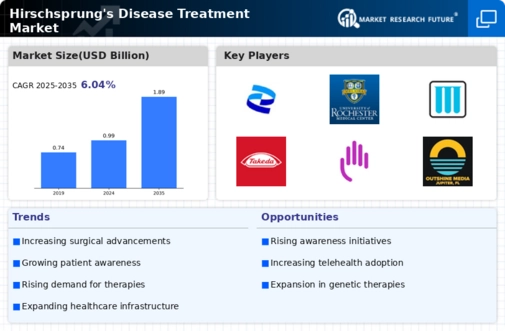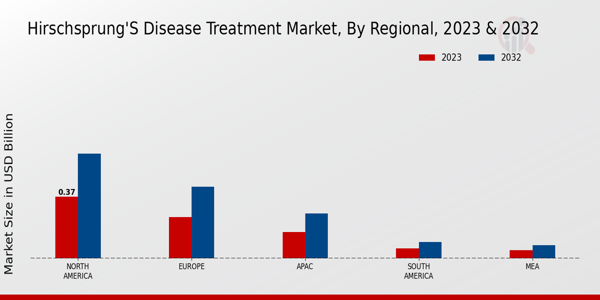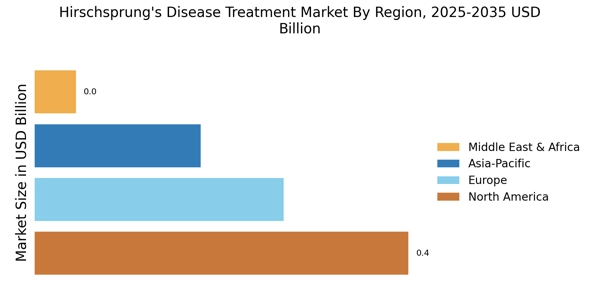Advancements in Surgical Techniques
Innovations in surgical techniques are significantly influencing the Hirschsprung's Disease Treatment Market. Minimally invasive procedures, such as laparoscopic surgery, have gained traction due to their potential to reduce recovery times and postoperative complications. These advancements not only improve patient outcomes but also enhance the overall efficiency of healthcare systems. As more surgeons adopt these techniques, the demand for specialized surgical instruments and training is likely to rise. This shift towards advanced surgical methods may lead to an expansion of the Hirschsprung's Disease Treatment Market, as hospitals and clinics invest in the necessary resources to provide cutting-edge care.
Emerging Technologies in Diagnostics
The emergence of advanced diagnostic technologies is poised to transform the Hirschsprung's Disease Treatment Market. Innovations such as genetic testing and advanced imaging techniques are enabling earlier and more accurate diagnoses of Hirschsprung's disease. These technologies not only facilitate timely intervention but also contribute to personalized treatment approaches, which are becoming increasingly important in modern medicine. As diagnostic capabilities improve, healthcare providers are likely to be better equipped to manage the condition effectively. This trend may lead to a surge in demand for diagnostic services and related treatments, thereby driving growth in the Hirschsprung's Disease Treatment Market.
Growing Investment in Pediatric Healthcare
The increasing investment in pediatric healthcare is a crucial driver for the Hirschsprung's Disease Treatment Market. Governments and private organizations are recognizing the importance of addressing congenital conditions in children, leading to enhanced funding for research, treatment facilities, and specialized training for healthcare providers. This trend is particularly relevant for Hirschsprung's disease, where early diagnosis and intervention are critical for positive outcomes. As healthcare systems allocate more resources to pediatric care, the Hirschsprung's Disease Treatment Market is expected to benefit from improved access to treatment options and increased awareness among healthcare professionals.
Rising Awareness and Education Initiatives
The rise in awareness and education initiatives surrounding Hirschsprung's disease is likely to propel the Hirschsprung's Disease Treatment Market. Campaigns aimed at educating parents and healthcare providers about the symptoms and treatment options are becoming more prevalent. This increased awareness can lead to earlier diagnosis and intervention, which are essential for effective management of the condition. As more individuals become informed about Hirschsprung's disease, the demand for specialized treatment options is expected to grow, thereby positively impacting the market. Additionally, educational initiatives may foster collaboration among healthcare professionals, further enhancing the quality of care provided.
Increasing Prevalence of Hirschsprung's Disease
The rising incidence of Hirschsprung's disease is a notable driver for the Hirschsprung's Disease Treatment Market. Recent estimates suggest that the condition affects approximately 1 in 5,000 live births, leading to a growing demand for effective treatment options. As awareness of the disease increases among healthcare professionals and parents, early diagnosis and intervention become more prevalent. This trend is likely to stimulate the market, as healthcare systems seek to provide timely surgical interventions and postoperative care. Furthermore, the increasing prevalence may lead to enhanced funding for research and development of innovative treatment modalities, thereby expanding the Hirschsprung's Disease Treatment Market.



















Leave a Comment